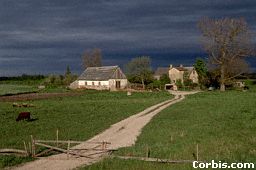| Group |
Baltic (with Old Prussian, Lithuanian
etc.), West Baltic (with Old Prussian, Sudovian and Galindan) |
| Geography |
Was spoken on the Baltic shores of modern Latvia and Lithuania, including
parts of East Prussia |
| History |
Curonians were well known from the history of the Middle Ages. As they
inhabited the shores they began to suffer foreign invasions already in
the 7th century, mainly by Vikings who did not occupy lands but plundered
them. In the 7th and 8th centuries Curonians had to repel Viking raids
very often, but still kept their independence. Curonian lands were conquered
by Teutonic knights in the 13th century, and later, in the 15th, came under
the Lithuanian Principality rule. In the 17th century Curonian language
disappeared, assimilated by Lithuanian. But even now dialects of Western
Lithuania and Latvia remind us about the language. |
| Phonetics |
Phonetics was similar to that of Lithuanian: each stop consonant had
its palatal variant, the stress was free and tonal. Vowels could be long
and short. |
| Nominal Morphology |
The Curonian language obviously had more noun case forms than Lithuanian
- due to Livonian influence it generated several agglutinative cases (like
allative, illative, adessive). |
| Verbal Morphology |
Similar to Lithuanian, with extensive use of the dual number |
| Writing |
No writing |
| Close Contacts |
Some dialectal vocabulary of Western Lithuanian show clear Curonian
elements, as well as the Livonian language, a Finnish dialect preserved
in Latvia. Curonians contacted with Livonians very closely in the Middle
Ages. |
| Picture |
 |
| More info |
|
